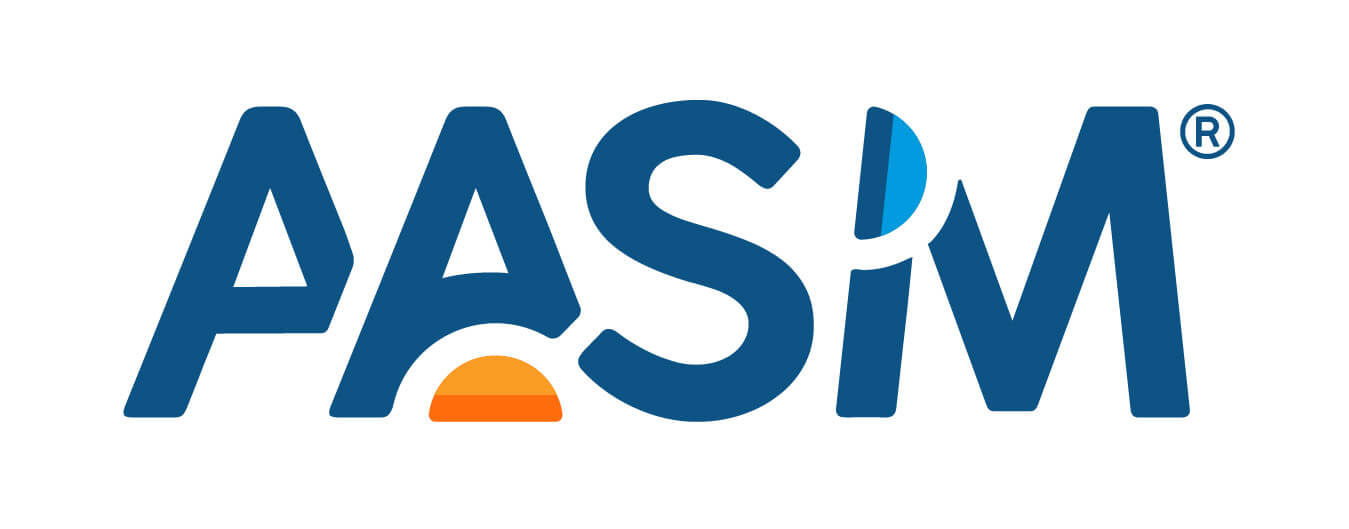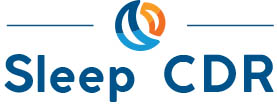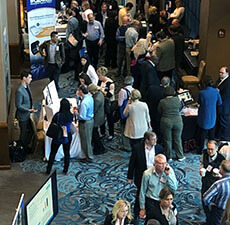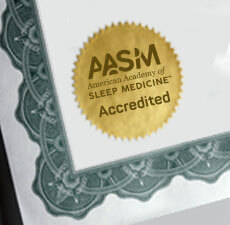Guidelines in Development
AASM Clinical Practice Guidelines provide physicians with recommendations for the evaluation, diagnosis, treatment and follow-up of patients with sleep disorders.
The AASM Guidelines Advisory Panel reviews and prioritizes suggested topics for clinical practice guidelines to identify those most suited for further pursuit. The AASM Board of Directors approves topics for development, then invites experts in sleep and circadian science research and sleep medicine to develop the guideline.
The task force performs a systematic review of all published evidence on the topic, and then assesses the evidence using GRADE (Grading of Recommendations Assessment, Development and Evaluation). Evidence-based clinical practice recommendations are developed to provide overall diagnostic or treatment strategies for patients, taking into account the quality of evidence, balance of benefits versus harms, patient values and preferences and resource use.
A draft of the guideline will be made available for a 4-week public comment period before it is approved by the AASM Board of Directors for publication.
Clinical Practice Guideline for the Diagnostic Testing for Adult OSA
This guideline project will prioritize doing a focused update of the existing clinical practice guideline for the diagnostic testing for adult OSA. An updated literature search will capture evidence for newer devices that can be included in the evidence base for the guideline.
Task Force Chair: Indu Ayappa, PhD
Task Force Members:
- Dennis Auckley, MD (Vice Chair)
- Lee Brown, MD
- Ambrose Chiang, MD
- Joyce Lee-Iannotti, MD
BOD and GAP Liaison: Vishesh Kapur, MD, MPH
Staff: Gerard Carandang, MS
Patient Populations:
Uncomplicated adult patients presenting with signs and symptoms that indicate an increased risk of OSA
Interventions:
- Updated data in previously accepted types of home sleep apnea tests
- Data in new/novel types of home sleep apnea tests
Outcomes:
- Diagnostic accuracy
- Quality of life
- Sleepiness
- OSA severity (AHI, REI, ODI, hypoxemic burden, time below 90%)
- Cardiovascular endpoints
- Mental health
- Cognitive function
- Treatment adherence
The final recommendations will be based upon the available evidence, and must be approved by the AASM Board of Directors.
Clinical Practice Guideline for Combination Therapy for Insomnia
This clinical practice guideline will provide practice recommendations for the combination of hypnotic drug treatment with behavioral treatment of insomnia in all adult patients, with the goal of identifying specific components that are most effective in specific circumstances.
Task Force Chair: Daniel Buysse, MD
Task Force Members:
- J. Todd Arnedt, PhD (Vice Chair)
- Luis F Buenaver, PhD
- Judy Chang, MD
- Julio Fernandez-Mendoza, PhD (SBSM representative)
- Salma Patel, MD, MPH
- Eric Zhou, PhD
BOD Liaison: Emerson M. Wickwire, PhD
GAP Liaison: Mandeep Singh, MD
Staff: Suzanne Hyer, PhD, RN
Patient Populations:
Adults with chronic insomnia disorder
Interventions:
- Behavioral-Psychological – Biofeedback; Cognitive behavioral therapy-insomnia (CBT-I); Cognitive therapy; Intensive sleep retraining; Mindfulness; Relaxation therapy (e.g., Abdominal breathing, Imagery training, Autogenic training); Paradoxical intention therapy; Sleep hygiene education; Sleep restriction therapy; Stimulus control therapy; Brief therapy(s) for insomnia
- Pharmacological – Benzodiazepine receptor agonist drugs (benzodiazepine and non-benzodiazepine agents); dual orexin receptor antagonist drugs (DORA); sedating antidepressant drugs (e.g., trazodone, doxepin, amitriptyline); sedating antihistamine drugs (e.g., diphenhydramine, doxylamine); melatonin; melatonin receptor agonist drugs; other drugs used to treat insomnia (e.g., gabapentin, pregabalin, sedating antipsychotic agents); other pharmacologically active agents used to treat insomnia (e.g., cannabis, herbal and naturopathic agents)
Outcomes:
- Insomnia symptom severity
- Remission rates
- Responder rates
- Sleep quality
- Sleep continuity (SE, SOL, WASO, EMA, number of night awakening (NWAK))
- Daytime sleepiness/ sedation
- Daytime function (cognitive symptoms, mood symptoms, physical symptoms (e.g. fatigue, pain, headaches))
- Treatment side effects
- Total sleep time
- Quality of Life
- Nights of hypnotic use
The final recommendations will be based upon the available evidence, and must be approved by the AASM Board of Directors.
Clinical Practice Guideline for the Use of a Home Sleep Apnea Test (HSAT) for the Diagnosis of OSA in Children
This clinical practice guideline will provide practice recommendations for the use of HSAT for the diagnosis of OSA in children. This guideline will update and replace the existing position paper for the Use of HSAT for the diagnosis of OSA in Children (2017).
Task Force Chair: Lynn D’Andrea, MD
Task Force Members:
- Christopher Cielo, DO (Vice Chair)
- Anne-Marie Adams, PhD
- Anuja Bandyopadhyay, MBBS, MD
- Dominic Gault, MD
- Christine Heubi, MD
BOD Liaison: Indira Gurubhagavatula, MD, MPH
GAP Liaison: Carol Rosen, MD
Staff: Laura Mitchell
Patient Populations:
Children with suspected OSA (< 18 years old)
Interventions:
- HSAT (types 2, 3, 4 devices)
- HSAT with ≥ 6 hrs recording time
- HSAT multiple nights
- HSAT with caregiver setup
Outcomes:
- Diagnosis of OSA (presence and severity)
- Sufficient data for clinical decision making
- Harms
The final recommendations will be based upon the available evidence, and must be approved by the AASM Board of Directors.
Clinical Practice Guideline for the Treatment of Central Sleep Apnea in Adults
This clinical practice guideline will provide practice recommendations for the treatment of central sleep apnea (CSA). This guideline will update and replace the existing best practice parameter for the treatment of CSA.
Task Force Chair: M. Safwan Badr, MD, MBA
Task Force Members:
- Rami Khayat, MD (Vice Chair)
- Joanne Shirine H. Allam, MD
- Matthew Naughton, MBBS, MD
- Grace Pien, MD, MSCE
- Winfried Randerath, MD
- Christine Won, MD, MSc
BOD Liaison: Susheel Patil, MD, PhD
GAP Liaison: Rashmi N. Aurora, MD, MHS
Staff: Kelly Keeler, MS
Patient Populations:
- Primary Central Sleep Apnea
- CSA Due to Congestive Heart Failure Including Cheyne Stokes Breathing Pattern and Not Cheyne Stokes Breathing
- CSA Due to a Medical Condition or Disorder Not Cheyne Stokes
- CSA Due to a Medication or Substance
- CSA Due to High Altitude Periodic Breathing
- Treatment-Emergent CSA
Interventions:
- Pharmacological therapies – Carbonic anhydrase inhibitors (acetazolamide), hypnotics (zolpidem, temazepam, triazolam)
- Positive airway pressure therapies – CPAP, BPAP, BPAP-ST, ASV
- Non-PAP therapies
Outcomes:
- Apnea-hypopnea index (AHI)
- Cardiovascular disease risk/stroke risk,
- Cycle length,
- Fatigue
- Hospitalization or health care utilization
- Insomnia
- Mental quality of life
- Mortality
- Overall quality of life
- Oxygen desaturation index (ODI)
- Sleep quality (patient reported)
- Sleepiness during the day
- Daytime functioning or work performance
- Sleep quality (PSG)
- Vigilance/alertness
- Wakefulness
The final recommendations will be based upon the available evidence, and must be approved by the AASM Board of Directors.
Clinical Practice Guideline for the Treatment of Extrinsic Circadian Rhythm Sleep-Wake Disorders
This clinical practice guideline will provide recommendations for the treatment of extrinsic circadian rhythm sleep-wake disorders in adults and children. This guideline will update and replace the existing practice parameters.
Task Force Chair: Kenneth Wright, PhD
Task Force Members:
- Sabra Abbott, MD, PhD (Vice Chair)
- Liza H Ashbrook, MD
- Christopher Drake, PhD
- Erin Flynn-Evans, PhD
- Catherine McCall, MD
BOD and GAP Liaison: Lynn Marie Trotti, MD, Msc
Staff: Uzma Kazmi, MPH, Kelly Keeler, MS
Patient Populations:
Adults with shift work disorder or jet lag disorder
Interventions:
- Planned sleep schedules/naps
- Timed light and or dark exposure
- Timed melatonin/melatonin agonist administration or other chronobiotic administration
- Sleep promoting medications (e.g., benzodiazepines, benzodiazepine receptor agonists) or substances
- Stimulant medications/ wake promoting medications or substances
- Caffeine
- Timed physical activity/exercise
- Diet and meal timing
- Combination treatments, CBT-I or sleep hygiene
- Planned work schedule
Outcomes:
- Excessive sleepiness/alertness
- Total sleep time
- Sleep quality
- Circadian alignment
- Quality of life
- Mental health
- Cognitive performance/ work performance
- Accident risk
- Sleep efficiency
- GI symptoms
The final recommendations will be based upon the available evidence, and must be approved by the AASM Board of Directors.
Clinical Practice Guideline for the Management of Sleep-Disordered Breathing in Inpatients
This clinical practice guideline will provide practice recommendations for the management of sleep-disordered breathing in inpatients.
Task Force Chair: Reena Mehra, MD, MS
Task Force Members:
- Dennis Auckley, MD (Vice Chair)
- Martha Billings, MD
- Karin Johnson, MD
- Rami Khayat, MD
- Cinthya Pena Orbea, MD
- Ashima Sahni, MD
- Sunil Sharma, MD
BOD and GAP Liaison: Susheel Patil, MD, PhD
Staff: Gerard Carandang, MS
Patient Populations:
Adult patients at risk for sleep-disordered breathing (or with a pre-admission diagnosis of sleep apnea) admitted to the hospital.
Interventions:
- Sleep apnea screening vs no screening
- Inpatient evaluation vs outpatient evaluation
- Positive airway pressure/supplemental oxygen/alternative therapies vs no treatment
- Inpatient sleep consult service vs other providers
- Inpatient physiologic monitoring vs no monitoring
- Post-discharge management with sleep medicine vs no post-discharge management with sleep medicine
Outcomes:
- Mortality
- Length of hospitalization
- Readmission
- Positive airway pressure adherence
- Incidence of sleep-disordered breathing-related comorbidities (e.g. hypertension, cardiovascular events)
- Daytime sleepiness
- Quality of life
- Sleep-disordered breathing diagnosis
- Stroke recovery
- Prevention of escalation in level of care (e.g. intubation, RRT support)
- Time to diagnosis
- Time to treatment
- Time to post-discharge follow-up
- Sleep quality
- Dyspnea
The final recommendations will be based upon the available evidence, and must be approved by the AASM Board of Directors.
Clinical Practice Guideline for the Treatment of Restless Legs Syndrome and Periodic Limb Movement Disorder
This clinical practice guideline will provide recommendations for the treatment of restless legs syndrome and periodic limb movement disorder in adults and pediatric patients. This guideline will update and replace the existing practice parameters.
Task Force Chair: John Winkelman, MD, PhD
Task Force Members:
- J. Andrew Berkowski, MD (Vice Chair)
- Lourdes M. Del Rosso, MD
- Brian Koo, MD
- Denise Sharon, MD, PhD
- Matthew Scharf, MD PhD
- Arthur S. Walters, MD
BOD Liaison: Anita Shelgikar, MD, MHPE
Staff: Uzma Kazmi, MPH
Patient Populations:
- Adult patients with Idiopathic/primary RLS
- Adult patients with RLS secondary to medical conditions
- Adult patients with Refractory RLS
- Adult patients with PLMD
- Pediatric patients with idiopathic RLS
- Pediatric patients with RLS secondary to medical conditions
Interventions:
- Pharmacological management (dopamine agonists, dopaminergic agents, anticonvulsants, opioids, adrenergic agonists, hypnotics, other medications)
- Surgical management (subthalamic deep brain stimulation, for secondary RLS-hemodialysis, nerve decompression surgery, endovenous laser ablation)
- Non-pharmacological management (avoidance of caffeine, alcohol, nicotine; sleep hygiene; supplementation with one of several minerals or vitamins; valerian root extract; acupuncture; physical treatment methods)
Outcomes:
- Disease severity; including augmentation rate
- Quality of life
- Sleep quality
- Sleep efficiency
- Sleep latency
- Wake after sleep onset (WASO)
- Excessive daytime sleepiness
- Loss of work/school productivity
- Periodic Limb Movement frequency
- Depression/anxiety/mood disturbance
- Resolution of ADHD symptoms (in peds population)
- Adverse effect- related drop/discontinuation/ withdrawal from study
- Fatigue
- Poor work/school performance/attendance
The final recommendations will be based upon the available evidence, and must be approved by the AASM Board of Directors.




